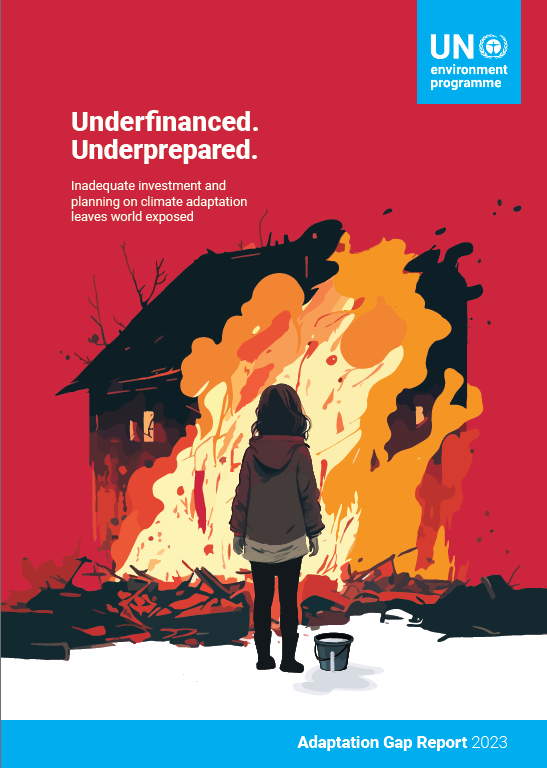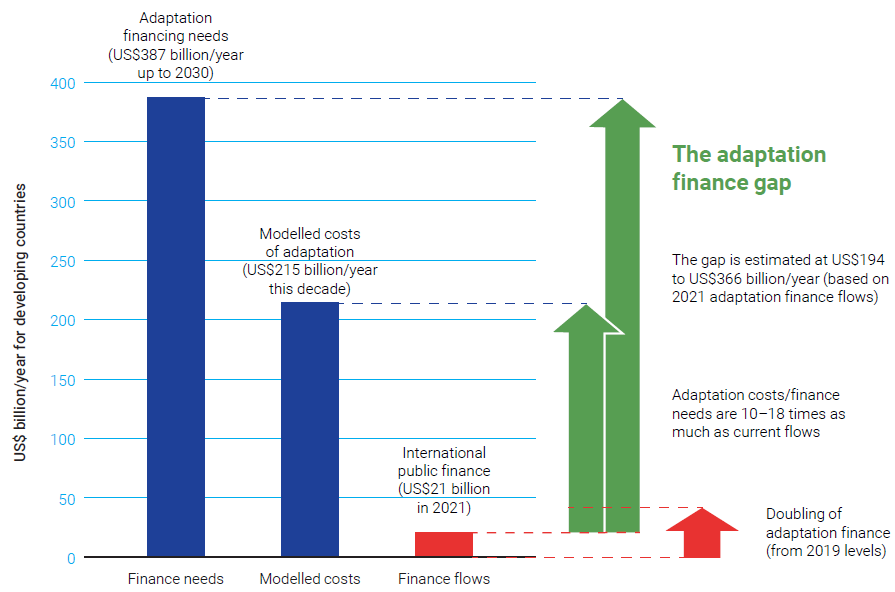Adaptation Gap Report 2023
United Nations report summarising the current state of adaptation to climate change, comparing current needs with funding, planning and implementation of actions.


This edition of the Adaptation Gap Report examines the current state of adaptation planning and implementation at the global level. It also includes a more detailed chapter on financing than previous editions, as well as a focus on loss and damage, which is increasingly present on international negotiation agendas.
It presents measures to improve national and global adaptation efforts – including concrete case studies – and identifies ways to increase adaptation funding.
The report identifies the adaptation finance gap, i.e. the difference between current financial flows and adaptation needs. This figure currently stands at between 194 and 366 billion dollars per year. The financial needs for adaptation are 10 to 18 times greater than current international public financial flows for adaptation, or at least 50% greater than previous estimates.
The report notes that whereas mitigation measures account for the lion’s share of funding, slow and insufficient progress in reducing emissions is already translating into soft and hard limits to adaptation – the points beyond which even adaptation options may not be feasible.
